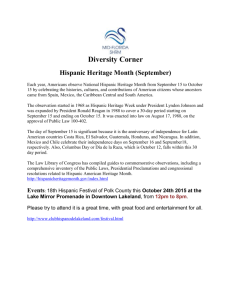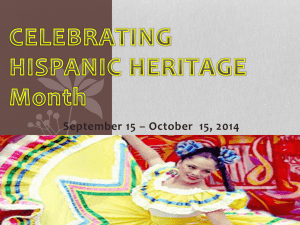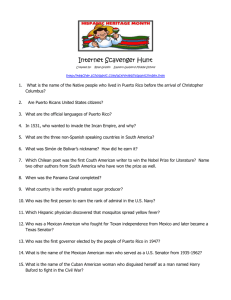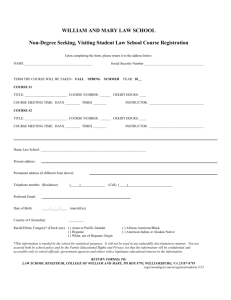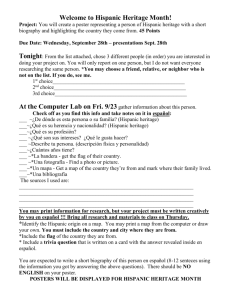Celebrate Hispanic Heritage Month!
advertisement
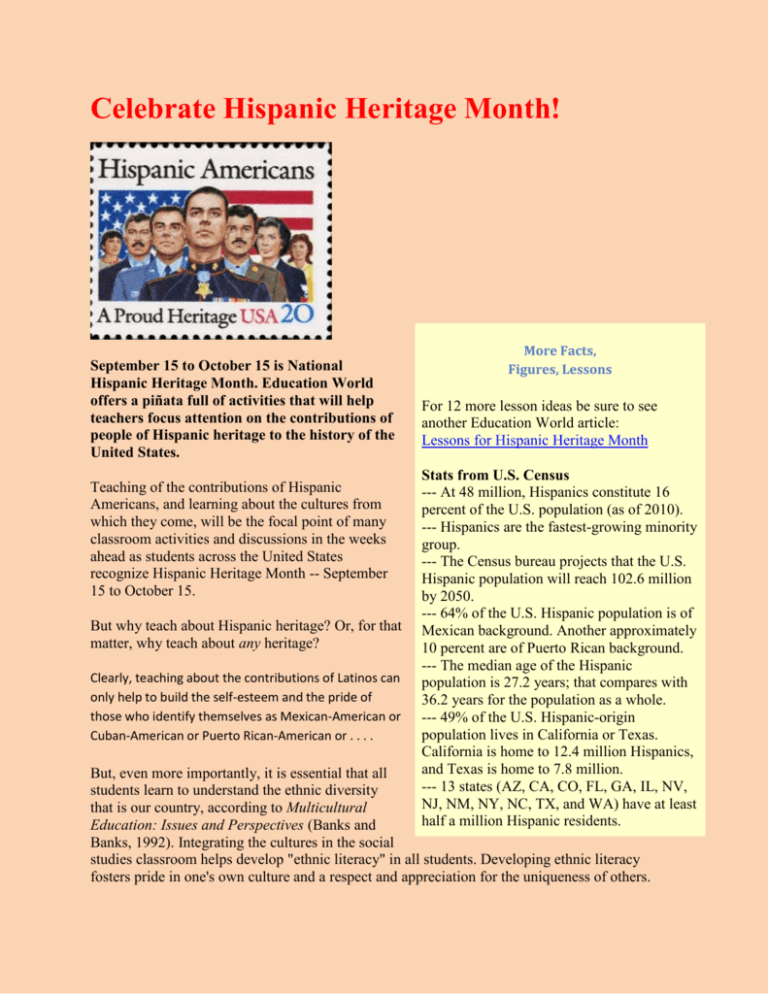
Celebrate Hispanic Heritage Month! September 15 to October 15 is National Hispanic Heritage Month. Education World offers a piñata full of activities that will help teachers focus attention on the contributions of people of Hispanic heritage to the history of the United States. Teaching of the contributions of Hispanic Americans, and learning about the cultures from which they come, will be the focal point of many classroom activities and discussions in the weeks ahead as students across the United States recognize Hispanic Heritage Month -- September 15 to October 15. But why teach about Hispanic heritage? Or, for that matter, why teach about any heritage? Clearly, teaching about the contributions of Latinos can only help to build the self-esteem and the pride of those who identify themselves as Mexican-American or Cuban-American or Puerto Rican-American or . . . . More Facts, Figures, Lessons For 12 more lesson ideas be sure to see another Education World article: Lessons for Hispanic Heritage Month Stats from U.S. Census --- At 48 million, Hispanics constitute 16 percent of the U.S. population (as of 2010). --- Hispanics are the fastest-growing minority group. --- The Census bureau projects that the U.S. Hispanic population will reach 102.6 million by 2050. --- 64% of the U.S. Hispanic population is of Mexican background. Another approximately 10 percent are of Puerto Rican background. --- The median age of the Hispanic population is 27.2 years; that compares with 36.2 years for the population as a whole. --- 49% of the U.S. Hispanic-origin population lives in California or Texas. California is home to 12.4 million Hispanics, and Texas is home to 7.8 million. --- 13 states (AZ, CA, CO, FL, GA, IL, NV, NJ, NM, NY, NC, TX, and WA) have at least half a million Hispanic residents. But, even more importantly, it is essential that all students learn to understand the ethnic diversity that is our country, according to Multicultural Education: Issues and Perspectives (Banks and Banks, 1992). Integrating the cultures in the social studies classroom helps develop "ethnic literacy" in all students. Developing ethnic literacy fosters pride in one's own culture and a respect and appreciation for the uniqueness of others. Many Hispanic Americans trace their roots to the cultures of the indigenous peoples of the Americas -- including the Arawaks (Puerto Rico), the Aztecs (Mexico), the Incas (South America), the Maya (Central America), and the Tainos (in Cuba, Puerto Rico and other places). Some trace their roots to the Spanish explorers -- who in the 1400s set out to find an easier and less costly way to trade with the Indies. Other Latinos trace their roots to the Africans who were brought as slaves to the New World. For purposes of the U.S. Census, Hispanic Americans today are identified according to the parts of the world that they or their ancestors came from, including Mexico, Puerto Rico, Cuba, Spain, or the nations of Central or South America. What follows is a loose series of activities that teachers might use to explore Hispanic heritage. But these activities -- which touch on the people, the statistics, the Internet resources -- are just the tip of the tortilla. Feel free to pick and choose, and (by all means!) to adapt these ideas in any way. Use these activities as a jumping-off point for a real fiesta celebrating and honoring the contributions of Hispanic Americans! Buena suerte! http://www.educationworld.com/a_lesson/lesson/lesson023.shtml http://hispanicheritagemonth.gov/ http://www.uscitizenpod.com/2011/10/national-hispanic-heritage-month-usps.html http://teacher.scholastic.com/activities/hispanic/index.htm
